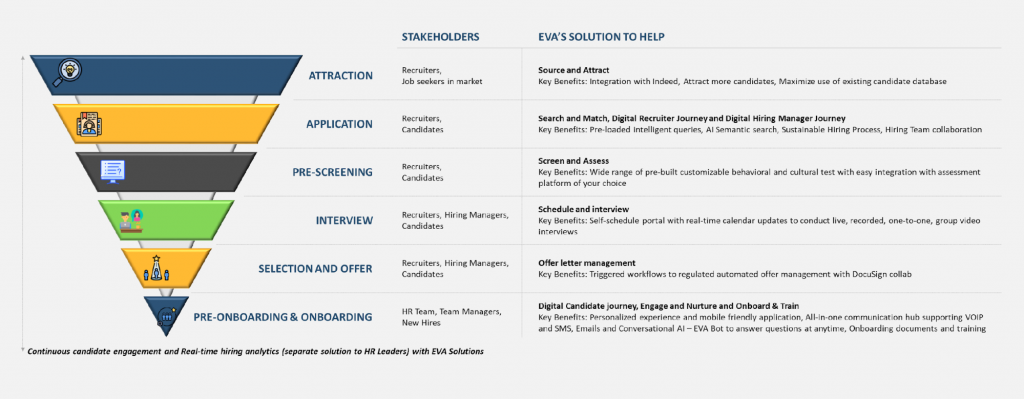According to Glassdoor research, recruiters receive at least 250 resumes for each position advertised in the market. Nevertheless, the hiring pipeline becomes extremely narrow with only 4 – 6 candidates presenting for an interview with hiring managers. Recruiters are challenged with the enormous task of filtering approximately the best 3% of the total application pool.
Though the average time to fill may range from 14 to 63 days depending on the company and industry, the advent of digital transformation in talent acquisition and the unavailability of talent in the market has resulted in a shortened time to fill, with some companies filling positions in less than a week. For the hiring team and company to compete in a market where demand for talent outnumbers supply, a manual hiring procedure can have an influence on applicant quality and, ultimately, company success in the long term.
Common challenges that arise with a manual recruitment method
- With the hiring marketplace expanding at a rapid pace by hosting more than 200 million resumes, recruiters cannot utilise the immense potential it provides through a manual approach. Given that a recruiter takes an average of 6 – 7 minutes to scan a resume, a recruiter cannot evaluate all of the possible prospects available in the market to find the best fit, considering the time constraints and manual effort.
- Biases, both conscious and unconscious, are encountered during the manual recruiting process. It is natural for the hiring team to choose a candidate that appears to match their version of the perfect applicant or candidates with backgrounds similar to one’s own. This can affect not only the quality of applicants chosen but also the creation of a comparable talent pool inside an organisation, influencing the whole talent recruitment and management process. With so much emphasis on the necessity of diversity in a company’s employees, a manual hiring procedure can lead to various gaps, including legal difficulties.
- 78% of job candidates believe that the way they are treated during the recruiting process is a good sign of how a company would treat its workers (LinkedIn). Candidate experience has become a cornerstone of effective hiring practices. Expectations on recruiters and the hiring team to engage a candidate throughout the hiring process until they are onboarded may be burdensome and leave many gaps resulting in unsatisfactory candidate experience.
- Top talents are off the market in 10 days. While companies that use manual, slow-manual hiring, the best candidates might not potentially see the completion of the hiring process as they might have, highly, received another offer.
Areas where EVA can be a partner to HR4.0 your recruitment processes





